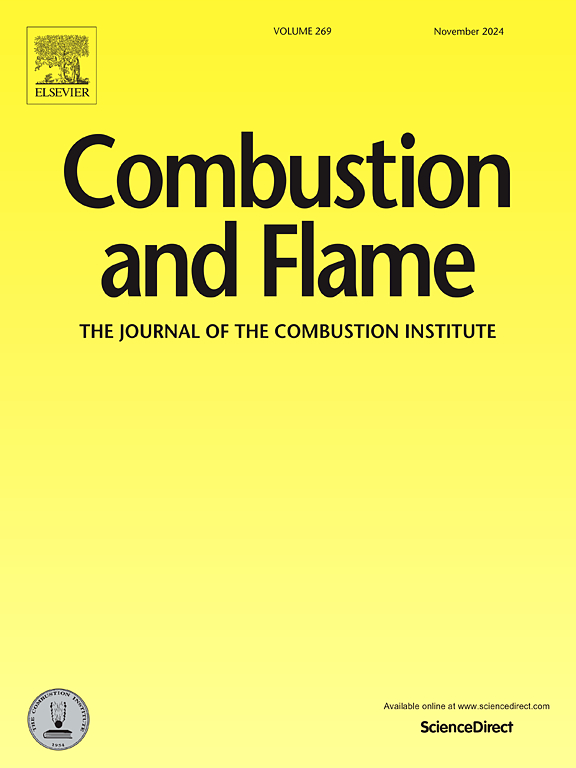Ignition and flame development of high-pressure liquid ammonia spray combustion with simultaneous high-speed OH* and NH2* chemiluminescence imaging
IF 5.8
2区 工程技术
Q2 ENERGY & FUELS
引用次数: 0
Abstract
Liquid ammonia, benefiting from its convenient storage and high hydrogen content, has gained widespread attention as a carbon-free fuel for combustion devices to achieve carbon emission reduction. In this study, the ignition and flame development characteristics of liquid ammonia spray flame are analyzed with simultaneous high-speed OH*, NH2* chemiluminescence and flame luminosity imaging. The test is conducted at the ambient pressure of 3 MPa, the ambient temperature of 950 K, and the injection pressure of 40 MPa. The results revealed that liquid ammonia spray flame can be divided into four stages: 1) the ignition process with the appearance of auto-ignition kernels at the jet front; 2) the flame propagation process with auto-ignition kernels expanding to the central spray region; 3) the fully-developed combustion process with the flame filling the core region; 4) the post-combustion process with the flame area decreasing rapidly. OH* signals were first observed at the jet front, and NH2* signals were observed after OH* signals appeared in aggregated form. Throughout the combustion process, OH* had a wide distribution and a long duration, while the NH2* not only appeared later but dissipated earlier, and the distribution was smaller than the OH*. Chemical kinetic analysis showed that the primary elementary reactions to produce OH at the ignition moment were O+H2O=2OH, H+O2=OH+O, and H2+O=H+OH, while NH2 was mainly formed through NH3+OH=NH2+H2O. It was worth noting that after the combustion end, sporadic flames and NH2* signals can still be observed in the jet region.
求助全文
约1分钟内获得全文
求助全文
来源期刊

Combustion and Flame
工程技术-工程:化工
CiteScore
9.50
自引率
20.50%
发文量
631
审稿时长
3.8 months
期刊介绍:
The mission of the journal is to publish high quality work from experimental, theoretical, and computational investigations on the fundamentals of combustion phenomena and closely allied matters. While submissions in all pertinent areas are welcomed, past and recent focus of the journal has been on:
Development and validation of reaction kinetics, reduction of reaction mechanisms and modeling of combustion systems, including:
Conventional, alternative and surrogate fuels;
Pollutants;
Particulate and aerosol formation and abatement;
Heterogeneous processes.
Experimental, theoretical, and computational studies of laminar and turbulent combustion phenomena, including:
Premixed and non-premixed flames;
Ignition and extinction phenomena;
Flame propagation;
Flame structure;
Instabilities and swirl;
Flame spread;
Multi-phase reactants.
Advances in diagnostic and computational methods in combustion, including:
Measurement and simulation of scalar and vector properties;
Novel techniques;
State-of-the art applications.
Fundamental investigations of combustion technologies and systems, including:
Internal combustion engines;
Gas turbines;
Small- and large-scale stationary combustion and power generation;
Catalytic combustion;
Combustion synthesis;
Combustion under extreme conditions;
New concepts.
 求助内容:
求助内容: 应助结果提醒方式:
应助结果提醒方式:


